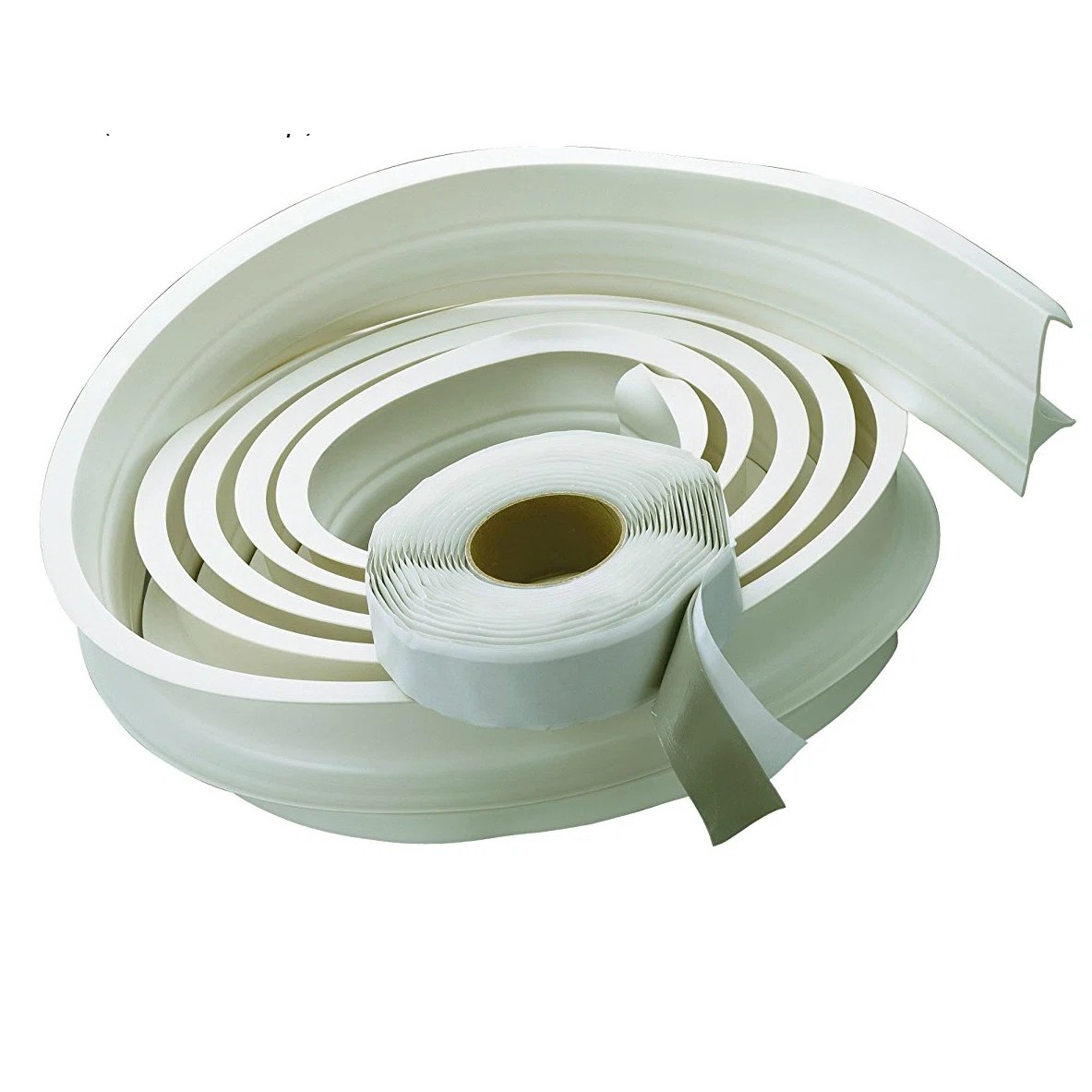Thinking of adding a relaxing soak to your nightly routine? Alcove soaking tubs are an excellent way to create a spa-like experience without sacrificing precious bathroom space. This guide covers everything you need to know about these tubs, from materials and features to installation and maintenance, helping you transform your bathroom into a personal oasis.
Understanding Alcove Soaking Tubs
Dreaming of a luxurious escape in your own home? An alcove soaking bathtub might be the perfect solution. Designed for deep, relaxing soaks, these tubs fit snugly within a three-walled alcove, maximizing space while offering a truly immersive bathing experience. They’re typically around 60 inches long, 30-32 inches wide, and while the overall depth is about 14-15 inches, the actual soaking depth is likely closer to 9 inches due to water displacement.
What Defines an Alcove Soaking Tub?
An alcove soaking tub combines the space-saving design of a standard alcove tub with the deep, luxurious experience of a soaking tub. This hybrid approach offers the best of both worlds – a spa-like retreat in a practical footprint. Discover the comfort of air mattresses and folding mattresses for ultimate relaxation beyond the bathroom.
Choosing the Right Material
Your tub’s material significantly impacts its durability, heat retention, and price. Common materials include:
- Acrylic: Lightweight, affordable, easy to clean, and available in various styles. Acrylic’s versatility makes it a popular choice.
- Fiberglass: Durable and relatively inexpensive, fiberglass offers good value, though it may be more susceptible to scratches than acrylic.
- Cast Iron: Renowned for exceptional heat retention, ensuring long, warm soaks. However, cast iron is considerably heavier and more expensive.
- Steel: A more budget-friendly alternative to cast iron, steel is durable but may not retain heat as effectively.
The best material for you depends on your budget and bathing preferences. If long, hot baths are essential, cast iron might be worthwhile. For budget-conscious buyers, acrylic or fiberglass are excellent options.
Enhancing Your Bathing Experience
Several features can elevate your soaks:
- Drain Placement: Consider left, right, or center drain placement based on your plumbing and personal comfort.
- Hydrotherapy Jets: Transform your bath into a therapeutic experience, but be mindful of added cost and maintenance.
- Comfort Features: Built-in armrests, headrests, and contoured designs enhance relaxation.
- Safety Features: A slip-resistant bottom is crucial, especially for children or older adults.
Installation: DIY or Professional?
While DIY installation is possible for experienced individuals, professional installation is often recommended. Professionals ensure proper leveling, plumbing connections, and structural support, minimizing the risk of costly errors. Installing an alcove soaking tub yourself might seem tempting to save money, but professional installation provides a warranty and peace of mind.
| Installation Method | Pros | Cons | Estimated Cost |
|---|---|---|---|
| DIY | Cost savings, sense of accomplishment | Risk of errors, time investment, requires tools & expertise | $0 – $200 (materials) |
| Professional | Expertise, warranty, avoids potential issues | Higher upfront cost | $300 – $1000+ |
Budgeting and Maintenance
Alcove soaking tub prices range from a few hundred to several thousand dollars, influenced by material, features, and brand. Remember to factor in installation and accessories like accent pillow sets to create a cozy atmosphere. Regular cleaning with mild cleaners prevents soap scum and mildew buildup. Inspecting for leaks or cracks ensures your tub’s longevity.
Creating Your Bathroom Sanctuary
Transform your bathroom into a relaxing retreat with thoughtful design choices. Soft lighting, candles, and plush towels create a spa-like ambiance. Consider a shower curtain or door if you intend to use the tub for showering.
Alcove Tubs vs. Soaking Tubs: Choosing the Right Fit
Understanding the distinctions between alcove and soaking tubs helps you select the ideal fit for your bathroom and lifestyle.
Alcove Tubs: Space-Saving Efficiency
Alcove tubs are defined by their three-walled enclosure, designed to maximize space, especially in smaller bathrooms. They often incorporate a shower, making them a practical choice for maximizing functionality. While typically shallower than dedicated soaking tubs, some alcove models offer a surprisingly comfortable soak.
Soaking Tubs: Deep Relaxation
Soaking tubs prioritize depth and immersion. Designed for luxurious relaxation, they come in various styles, including freestanding, drop-in, and alcove models. While alcove soaking tubs combine space efficiency with deep soaking, other styles might require more space. Soaking tubs can range from budget-friendly to high-end, depending on material and features.
Comparing Alcove and Soaking Tubs
| Feature | Alcove Tub | Soaking Tub |
|---|---|---|
| Installation | Fits within a three-walled alcove | More placement flexibility (freestanding, drop-in, alcove) |
| Depth | Generally shallower | Designed for a deeper soak |
| Cost | Typically more affordable | Ranges from budget-friendly to high-end |
| Space | Ideal for smaller bathrooms | Can require more space |
| Style | Often combined with shower; fewer style options | Wide variety of styles |
Researching new materials and designs is vital as the future of bathtubs evolves, promising exciting innovations. Experts suggest potential advantages and disadvantages for each type of tub, but ongoing studies could shift these perceptions over time.
Disadvantages of Soaking Tubs: Weighing the Pros and Cons
While soaking tubs offer luxurious relaxation, understanding their potential drawbacks ensures an informed decision.
Space Requirements
Soaking tubs are significantly larger than standard tubs, potentially overwhelming small bathrooms. Careful planning and accurate measurements are essential to ensure a comfortable fit.
Cost Considerations
Soaking tubs often involve higher upfront costs for the tub itself, installation (especially if plumbing modifications are needed), and increased water usage.
Functionality
Many soaking tubs lack features like jets or shower conversion, potentially limiting their versatility. If you enjoy a stimulating bath or the convenience of a combined tub/shower, this is a crucial consideration.
Maintenance
The larger surface area of a soaking tub can make cleaning more demanding. Increased water capacity also creates a more humid environment, potentially promoting mold and mildew growth if ventilation is inadequate.
Installation Challenges
The weight of some soaking tubs, particularly cast iron or stone resin models, might require floor reinforcement, adding to installation complexity and cost.
Key Considerations
| Feature | Potential Drawback |
|---|---|
| Size | Requires ample bathroom space. |
| Cost | Higher purchase price, installation, and water bills. |
| Functionality | Often lacks jets or shower capabilities. |
| Maintenance | More challenging cleaning and potential for mold growth. |
| Installation | Can be complex and costly due to weight and plumbing. |
Soaker Tubs vs. Regular Tubs: A Deeper Look
Choosing between a soaker tub and a regular tub depends on your priorities and bathroom space. Soaker tubs offer a luxurious, immersive experience, while regular tubs prioritize practicality.
Depth and Immersion
Soaker tubs are designed for deep soaks, typically exceeding 20 inches in depth. Regular tubs, usually 14-17 inches deep, are better suited for quick, functional bathing.
Size and Space
Soaker tubs are larger in all dimensions, requiring more bathroom space. Standard tubs are more compact, ideal for smaller bathrooms.
Budget
Soaker tubs generally cost more due to size, materials, and installation complexity. Regular tubs offer a more budget-friendly option.
Design and Atmosphere
Soaker tubs often become a bathroom’s focal point, creating a spa-like ambiance. Regular tubs are more utilitarian, blending into the background.
Installation and Maintenance
Soaker tub installation can be more involved due to size and weight. Both types require regular cleaning, but soaker tubs’ larger surface area demands more effort.
Key Takeaways
- Immersion vs. Practicality: Soaker tubs prioritize deep soaks; regular tubs prioritize functionality.
- Space: Soaker tubs need more space; regular tubs fit smaller bathrooms.
- Budget: Soaker tubs are generally more expensive; regular tubs are more affordable.
- Design: Soaker tubs are often focal points; regular tubs are more utilitarian.
- Installation: Soaker tub installation can be more complex.
Choosing the right tub depends on your individual needs and bathroom layout. Consider your budget, desired bathing experience, and available space to make the best decision for your home.
- How to Get Mustard Out of Clothes: Fast & Effective Stain Removal Guide - April 26, 2025
- How to Get Mustard Out of Clothes: A Complete Guide - April 26, 2025
- How to Get Motor Oil Out of Clothes: Proven Methods & Step-by-Step Guide - April 25, 2025










